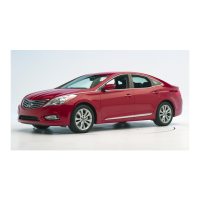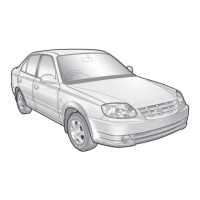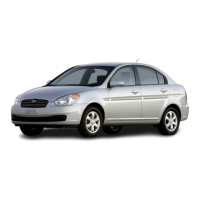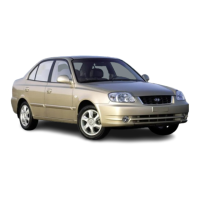
Do you have a question about the Hyundai Automobile and is the answer not in the manual?
| Brand | Hyundai |
|---|---|
| Model | Automobile |
| Category | Automobile |
| Language | English |
Explains how to navigate and understand the owner's manual, including warnings and cautions.
Details the types of fuel, octane ratings, and fuel additives recommended for optimal vehicle performance.
Explains the function and data recorded by the Event Data Recorder (EDR) in the vehicle.
Provides a labeled diagram and list of interior controls and features for easy identification.
Details the instrument cluster components and their functions for driver information.
Illustrates and labels key components within the engine compartment for identification.
Covers the adjustment and features of driver, front passenger, and rear seats, including safety considerations.
Explains the proper use, restraint system, and warnings associated with seat belts for occupant safety.
Provides essential information and warnings on child safety seats and proper restraint in the vehicle.
Details the operation, components, and safety precautions related to the vehicle's airbag system.
Explains the operation and security features of the vehicle's keys and ignition system.
Describes the functions and operation of the smart key system for locking, unlocking, and starting the vehicle.
Details how to operate the vehicle's door locks from inside and outside the vehicle.
Explains the operation of power windows, including automatic functions and safety precautions.
Covers the operation of automatic heating, air conditioning, and climate control features.
Identifies and explains the various gauges, indicators, and warning lights on the instrument cluster.
Provides guidance on actions to take if the engine stalls or a flat tire occurs while driving.
Offers troubleshooting steps for when the engine fails to start or turns over slowly.
Details the correct procedure for jump-starting a vehicle using jumper cables and a booster battery.
Explains the TPMS malfunction and low tire pressure indicators and actions to take.
Provides step-by-step instructions for changing a flat tire, including safety precautions.
Illustrates and labels major components within the engine compartment for maintenance checks.
Outlines normal and severe usage maintenance schedules to ensure vehicle longevity and performance.
Details how to check and change engine oil and filter, including important warnings and cautions.
Provides essential safety precautions and procedures for handling, charging, and replacing the vehicle battery.
Covers tire care, inflation, rotation, replacement, and identification markings for safe operation.
Explains the location, types, and replacement procedure for vehicle fuses and fuse panels.
Lists the exterior dimensions and key measurements of the vehicle.
Specifies the recommended types and quantities of lubricants and fluids for vehicle maintenance.
Explains how to locate and identify the Vehicle Identification Number (VIN) for registration and legal purposes.
Provides contact information for Hyundai regional offices for customer inquiries.
Details the procedure for reporting potential safety defects to NHTSA and Hyundai Motor America.












